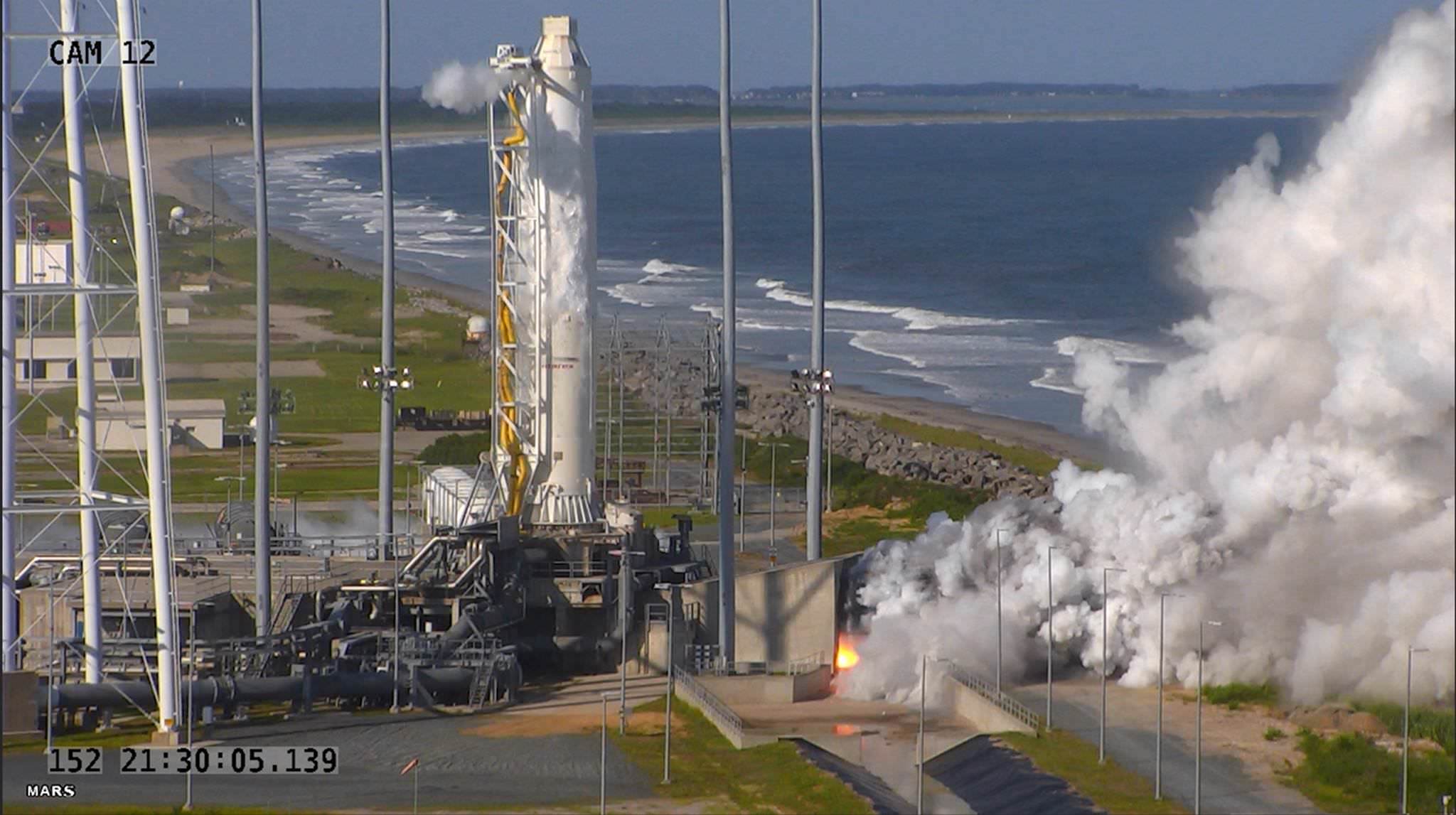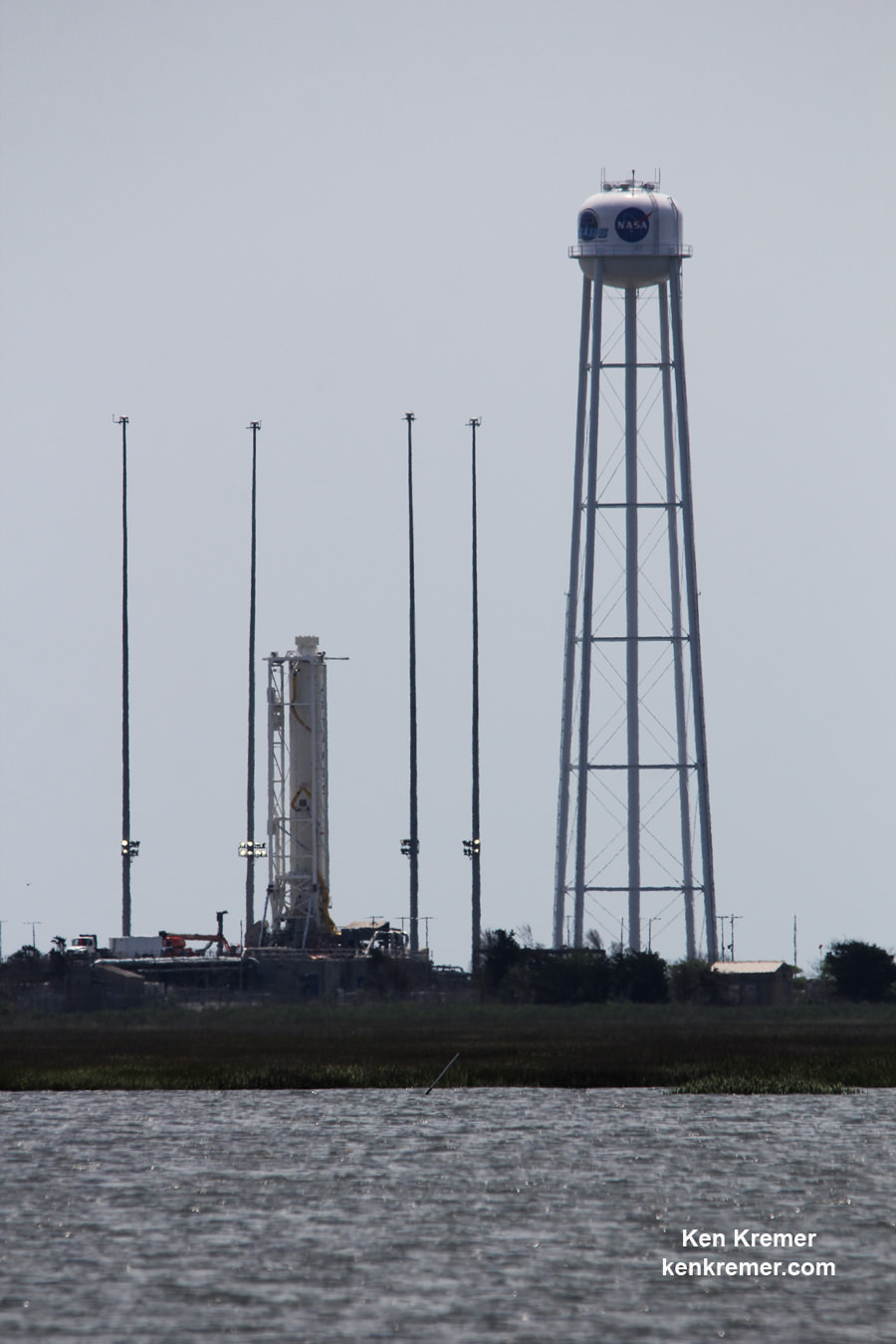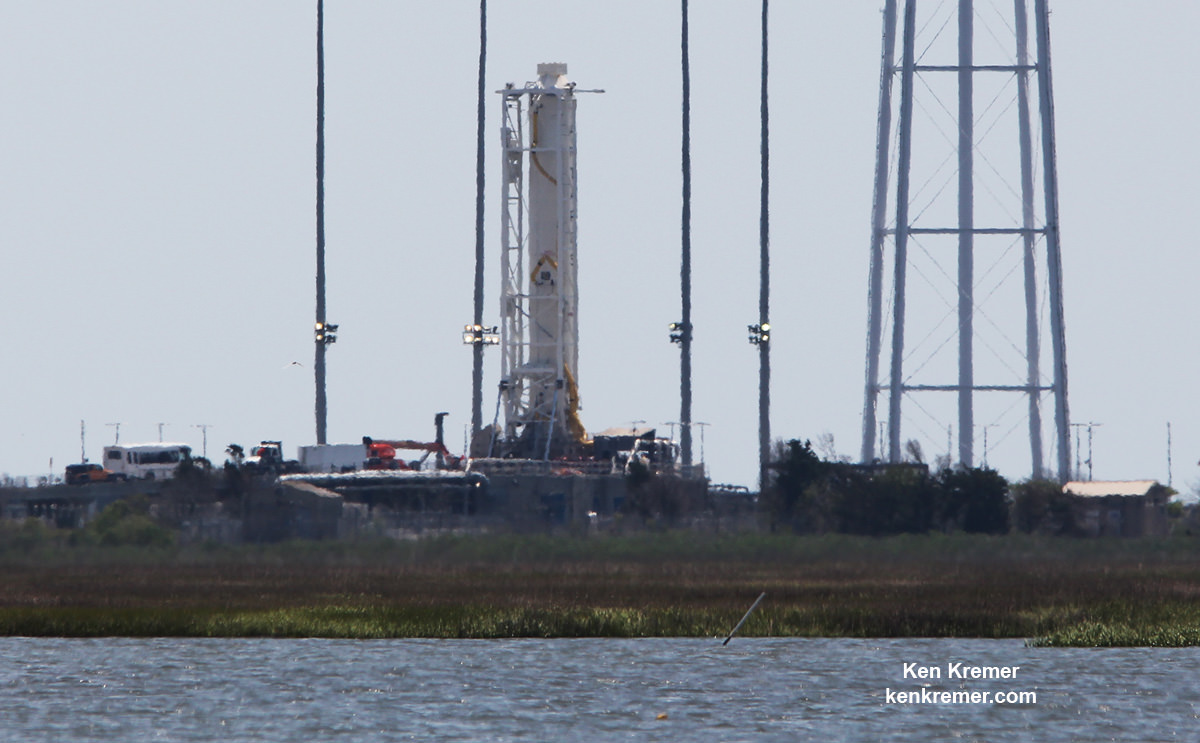
Orbital ATK announced late Tuesday that the company’s Antares medium-class commercial rocket outfitted with new first stage RD-181 engines has successfully completed a test firing of the powerplants.
The 30-second long static test firing took place at 5:30 p.m. Tuesday evening, May 31, at Virginia Space’s Mid-Atlantic Regional Spaceport (MARS) Pad 0A.
The now revamped launch vehicle – dubbed Antares 230 – has been ‘re-engined’ and upgraded with a pair of modern and more powerful first stage engines – the Russian-built RD-181 fueled by LOX/kerosene.
The engine test was conducted using only the first stage of Antares at the MARS Pad 0A at NASA’s Wallops Flight Facility.
“Early indications show the upgraded propulsion system, core stage and launch complex all worked together as planned,” said Mike Pinkston, Orbital ATK General Manager and Vice President, Antares Program.
“Congratulations to the combined NASA, Orbital ATK and Virginia Space team on a successful test.”
Orbital ATK engineers will now “review test data over the next several days to confirm that all test parameters were met”

If all goes well with the intensive data review, the company could launch Antares as soon as July on its next NASA contracted mission – known as OA-5 – to resupply the International Space Station (ISS).
The test involved firing up Antares dual first stage RD-181 engines at full 100% power (thrust) for a scheduled duration of approximately 30 seconds. Hold down restraints kept the rocket firmly anchored at the pad during the test.
The RD-181 replaces the previously used AJ26 which failed moments after liftoff during the last launch on Oct. 28, 2014 resulting in a catastrophic failure of the rocket and the Cygnus cargo freighter.
The RD-181 flight engines are built by Energomash in Russia and had to be tested via the static hot fire test to ensure their readiness.
“They are a good drop in replacement for the AJ26. And they offer 13% higher thrust compared to the AJ26,” said Kurt Eberly, Orbital ATK Antares deputy program manager, in an interview with Universe Today.

As a result of switching to the new RD-181 engines, the first stage also had to be modified to incorporate new thrust adapter structures, actuators, and propellant feed lines between the engines and core stage structure.
So the primary goal was to confirm the effectiveness of the new engines and all the changes in the integrated rocket stage.
“The successful stage test, along with the extensive testing of each new RD-181, gives us further confidence in the first stage propulsion and in moving forward to launch,” said Pinkston.
“We are now focused on the OA-5 mission and launching the enhanced Cygnus spacecraft to the International Space Station on our upgraded, higher-performing Antares rocket.”
The test used the first stage core planned to launch the OA-7 mission from Wallops late this year.
With the engine test is completed, the OA-7 stage will be rolled back to the HIF and a new stage fully integrated with the Cygnus cargo freighter will be rolled out to the pad for the OA-5 ‘Return to Flight’ mission as soon as July.
“Each of the new flight RD-181 engines has undergone hot fire acceptance testing at the manufacturer’s facility prior to being shipped to Orbital ATK. A certification test series was successfully completed in the spring of 2015 where a single engine was test fired seven times, accumulating 1,650 seconds of test time and replicating the Antares flight profile, before being disassembled for inspection,” said Orbital ATK officials.

Stay tuned here for Ken’s continuing Earth and Planetary science and human spaceflight news.

What.. no video? He sighs… HE wanted to hear those new engines roar, even if for only 30 seconds…